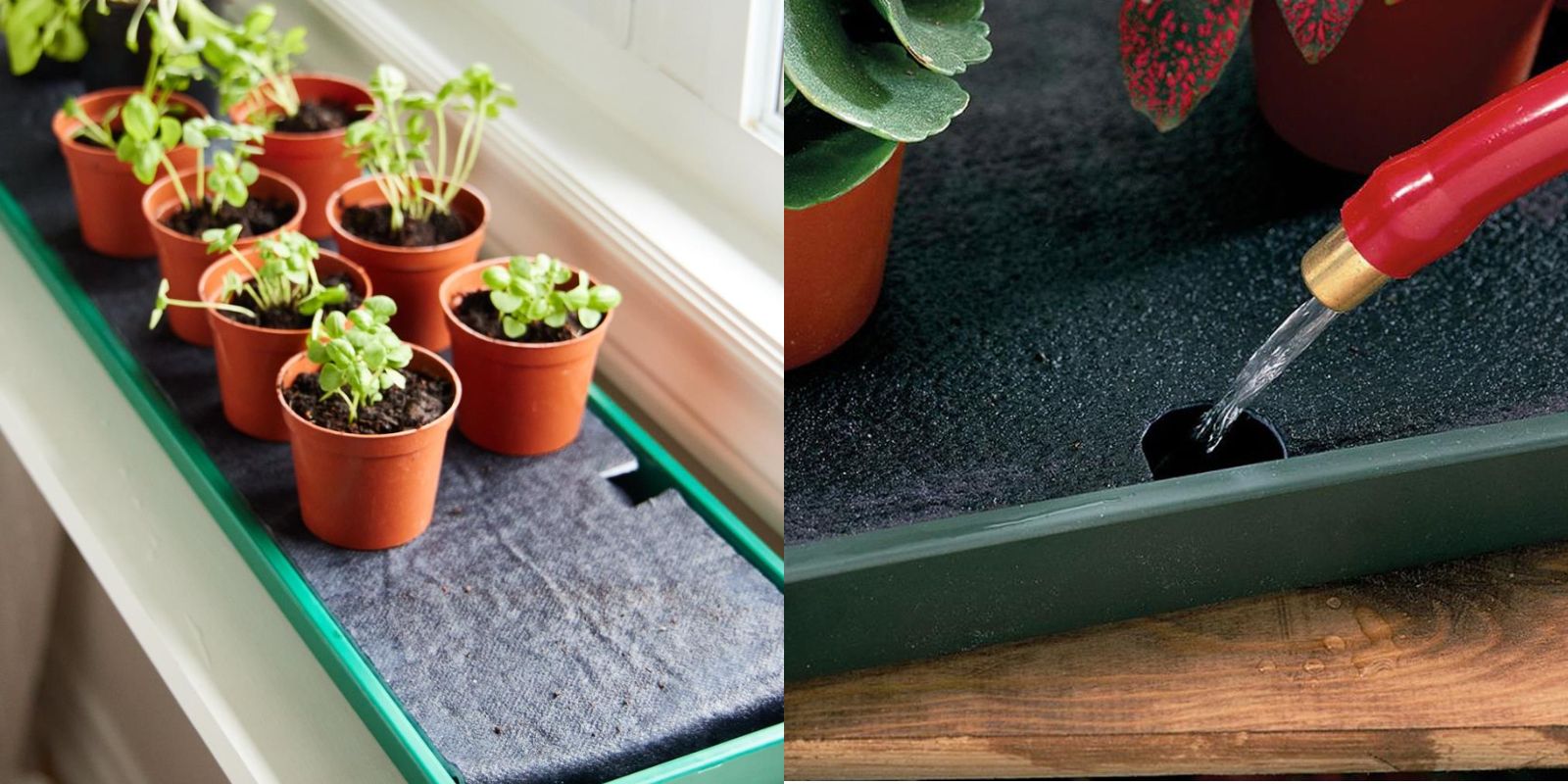Watering plants consistently can be a challenge, especially when life gets busy or when you’re away for a few days. A self-watering tray is an excellent solution for maintaining your plants’ hydration needs without constant attention. This method is sustainable, reduces water waste, and promotes healthy root systems, making it ideal for seedlings, container plants, or even small indoor gardens.
This comprehensive guide will walk you through everything you need to know about self-watering trays, from their benefits to step-by-step instructions on how to create one at home.
What Is a Self-Watering Tray?
A self-watering tray is a simple irrigation system where plants receive water through capillary action. This system consists of a shallow tray filled with water and a wicking material that draws water up to the plants’ roots. It provides consistent moisture without overwatering and is particularly useful for gardeners looking to save time while ensuring optimal plant health.
Benefits of Using a Self-Watering Tray
- Consistent Hydration: Keeps the soil evenly moist, preventing dryness or overwatering.
- Time-Saving: Reduces the need for daily watering, making it ideal for busy gardeners or when traveling.
- Water Efficiency: Minimizes waste by delivering water directly to the roots.
- Healthier Plants: Promotes strong root growth by encouraging plants to draw water as needed.
- Convenient for Seedlings: Ensures young plants receive consistent moisture for better germination and growth.
Materials Needed to Build a Self-Watering Tray
Creating a self-watering tray is simple and inexpensive. Here’s what you’ll need:
- A shallow tray or plastic container.
- Capillary matting or an absorbent cloth.
- Plant pots with drainage holes.
- Water.
Optional additions:
- Gravel or small stones for stability.
- A float indicator to monitor water levels.
Step-by-Step Guide to Creating a Self-Watering Tray
Step 1: Choose the Right Tray
Select a shallow tray or container that is large enough to accommodate your plant pots. Ensure the tray has enough depth to hold water without overflowing.
Step 2: Prepare the Capillary Matting
Cut a piece of capillary matting or absorbent cloth to fit the bottom of the tray. This material will wick water from the tray to the plant pots.
Step 3: Add a Water Reservoir
Fill the tray with a shallow layer of water. The water level should reach the bottom of the capillary matting but not submerge the plant pots completely.
Step 4: Place the Matting in the Tray
Lay the capillary matting evenly in the tray, ensuring it is fully saturated with water.
Step 5: Position the Plant Pots
Place your plant pots on top of the matting. Make sure the pots have drainage holes so the water can be absorbed effectively.
Step 6: Monitor and Refill
Check the water levels regularly and refill the tray as needed to maintain consistent moisture.
Tips for Optimizing Your Self-Watering Tray
- Use Proper Pots: Ensure your pots have good drainage to prevent root rot.
- Choose the Right Matting: Opt for high-quality capillary matting for better water absorption.
- Adjust for Different Plants: Group plants with similar watering needs together for best results.
- Add a Float Indicator: Install a small float to make it easier to monitor water levels.
- Clean Regularly: Prevent algae or mold growth by cleaning the tray and matting every few weeks.
Variations for Self-Watering Trays
1. DIY with Household Items
Repurpose an old baking tray or plastic lid as the base for your self-watering tray. Use an old towel or sponge as a wicking material.
2. Integrated Reservoirs
For larger setups, add a separate water reservoir connected to the tray through a siphon system. This provides a longer-lasting water supply.
3. Advanced Designs with Gravel
Layer gravel or stones beneath the matting to improve water distribution and stability for heavier pots.
Common Issues and How to Solve Them
1. Algae Growth
If water in the tray is exposed to light for extended periods, algae may develop. To prevent this:
- Use opaque trays or cover the water surface.
- Clean the tray and replace the water regularly.
2. Waterlogging
Excess water can lead to waterlogged soil and root rot. Prevent this by:
- Keeping the water level just below the pot base.
- Using pots with adequate drainage.
3. Uneven Watering
Ensure the capillary matting is evenly saturated to avoid dry spots.
When to Use a Self-Watering Tray
- Seedling Care: Perfect for starting seeds that require consistent moisture.
- Indoor Plants: Convenient for houseplants that prefer even watering.
- Vacations or Busy Schedules: Keeps plants hydrated when you’re away or occupied.
Why Self-Watering Trays Are a Sustainable Gardening Choice
Using a self-watering tray conserves water and reduces the risk of overwatering, making it an eco-friendly choice. By delivering water directly to the roots, this method minimizes waste and supports healthier plant growth. For gardeners looking to reduce their environmental footprint, a self-watering tray is a practical solution.
Conclusion
A self-watering tray is a game-changer for gardeners seeking a simple, effective way to maintain consistent plant hydration. Whether you’re nurturing seedlings, caring for houseplants, or managing a small container garden, this tool ensures your plants thrive with minimal effort.
Have you tried using a self-watering tray? Share your experiences or tips in the comments below to inspire fellow gardeners! 🌱

